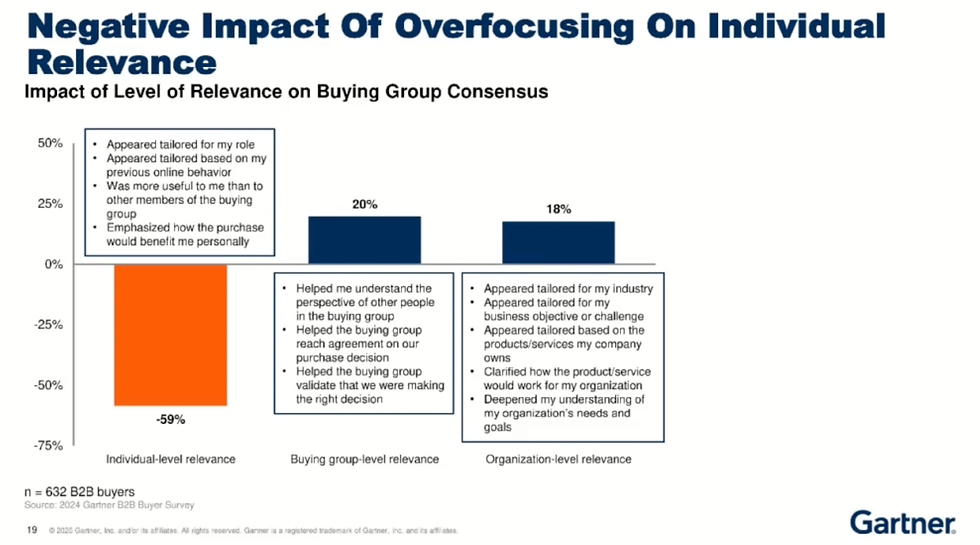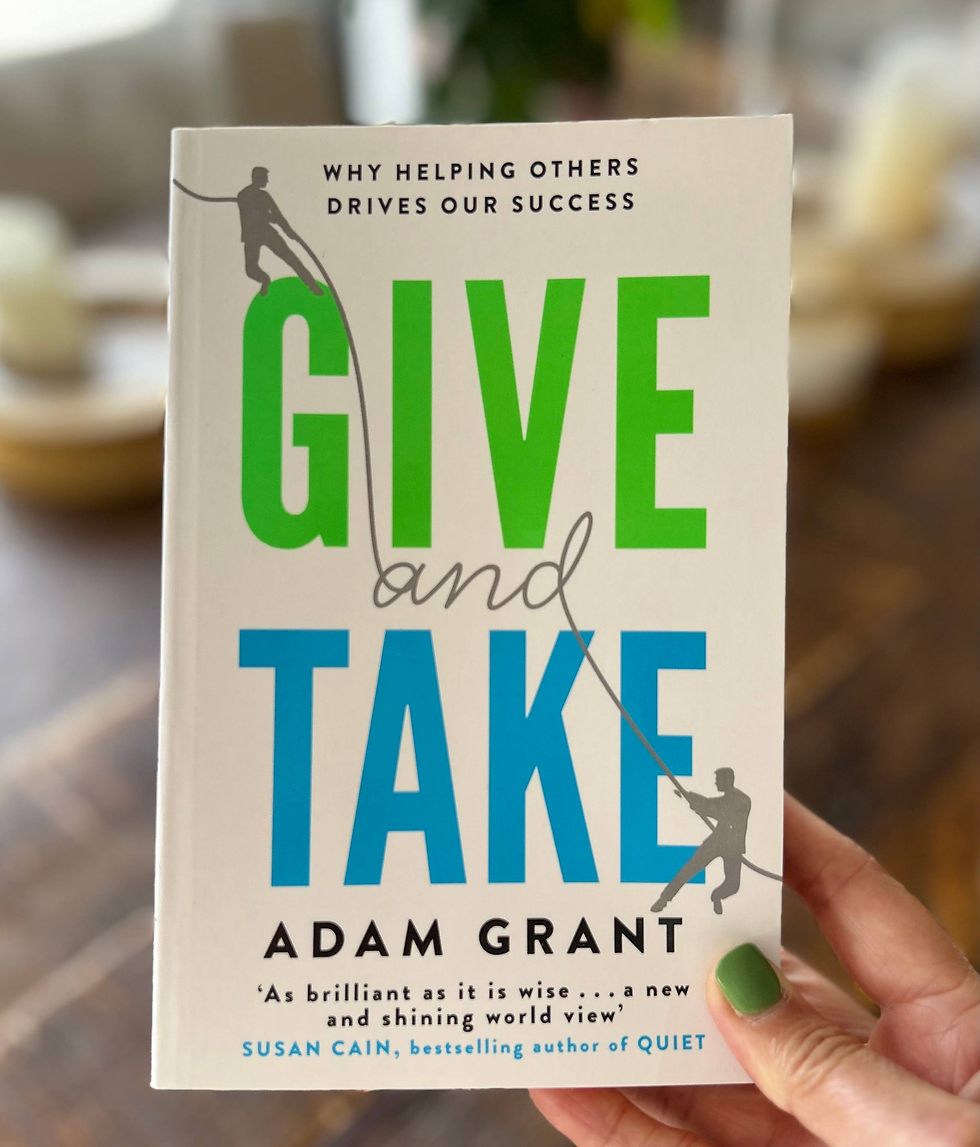What's really stopping your sales deals from closing
- Ren Saguil

- Apr 18
- 7 min read
Sarah, one of my students, asked me,
Ren, how can I politely ask my client if we need to talk to other stakeholders? I'm speaking with a junior person, and I feel I'm not getting the complete information. I don't want to offend them.
This newsletter topic was inspired by Sarah. Let me share my response to her question before we deep dive into it.
Here is how I would frame it:
In our experience working with companies your size, we have learned that these kinds of initiatives require involvement and approval from the XX team, a functional head, and an executive sponsor.
Does that align with your decision-making process? Perhaps we can involve them in our next meeting.
In enterprise or some people call it B2b sales, the journey from initial interest to a signed contract rarely involves a single decision-maker. Instead, it typically navigates through a buying group, a collection of individuals with diverse roles, goals, and interests, all ultimately aiming to make a purchase.
Having been on both sides of B2B deals—as a salesperson and a buyer—I know firsthand how challenging it can be to get everyone in a buying group to agree on a decision. Getting all stakeholders on the same page is the biggest hurdle. When consensus is lacking, it can significantly delay or even stop the purchasing process.
It's frustrating, but that's the nature of enterprise deals.
Gartner research has identified key barriers that prevent B2B buying groups from completing purchases.

These significant obstacles include:
Conflicting goals and interests among buying group members: For instance, finance departments might prioritize cost minimization, while other stakeholders, like the end-users, might advocate for premium features and enhanced capabilities.
Non-buying group members overruling recommendations or decisions: Individuals outside the core buying group can exert their influence based on their organisational power, often without a comprehensive understanding of the requirements.
Senior stakeholders creating bottlenecks: The involvement of high-level executives, while often necessary, can sometimes lead to delays in decision-making.
Given these complexities, salespeople who focus solely on pushing their product or solution often miss a crucial element.
The ultimate goal for sales reps isn't just to sell; it's to help the buying group create more consensus and agree on a decision.
🎧 Want to learn on the go? Good news - I've turned this newsletter into a podcast episode just for you! Listen now during your commute or workout.
The Tangible Benefits of Buying Group Consensus
The impact of achieving consensus is substantial.
Latest Gartner report reveal that buying groups that reach high consensus are 2.3 times more likely to close a high-quality deal. Conversely, groups with low consensus only have around a 30% chance of achieving such a deal, compared to the 75% chance for high-consensus groups.
A high-quality deal is defined as an ambitious or premium purchase that meets the customer's expectations. This includes:
Buyers purchasing the initially intended capabilities without downgrading.
Buyers committing to the desired volume.
Buyers achieving their initial objectives.
Buyers not experiencing purchase regret, questioning their decision regarding the product, quantity, or supplier.
These are the desirable outcomes for both the seller and the buyer, fostering long-term, mutually beneficial relationships.
Why One-on-One Sales Pitches Don't Always Work
Interestingly, Gartner’s research uncovered a negative correlation between focusing solely on individual relevance and driving buying group consensus.

While tailoring outreach to specific individuals (like the decision-maker or influencer) is a common sales tactic, an overemphasis on this can be detrimental to the overall group dynamic. By focusing too narrowly on individual needs, sellers may inadvertently overlook the broader group objectives and fail to foster a shared understanding.
Instead, a more effective approach involves shifting the focus towards buying group level relevance and organizational group level relevance.
Providing information, content, and assistance that addresses the collective needs and objectives of the buying group can lead to a 20% potential increase in buying group consensus. Similarly, focusing on the broader organizational context can yield an 18% potential increase.
This doesn't mean abandoning individual tailoring and personalisation entirely.
Rather, it emphasizes the importance of balancing individual relevance with a broader focus on the buying group as a whole. Sellers need to tailor their approach while simultaneously ensuring that the information shared resonates with the entire group and aligns with overarching organizational goals.
How to Get Everyone on Board
Let's explore some dialogue examples that show how salespeople can help build consensus among stakeholders and enable decision-making:
Scenario 1: Addressing Conflicting Goals
Characters: Sarah (Sales Representative), Mark (Finance Manager – focused on cost), Lisa (Operations Manager – focused on functionality).
Context: Sarah is presenting a software solution to the buying group. Mark has expressed concerns about the price, while Lisa is keen on the premium features.
Dialogue:
Sarah: "Mark, I understand your focus on budget, and that's a critical consideration for any investment. Lisa, you've highlighted the importance of the advanced analytics for streamlining our operations. Many of our clients have found that while the initial investment in the premium version is slightly higher, the increased efficiency and data-driven insights have led to significant cost savings in the long run [Referencing a potential organizational-level benefit].
Would it be helpful if we walked through a potential ROI calculation that considers both the initial cost and the projected efficiency gains for the operations team?
This way, we can see a clearer picture of the overall value for the organisation Focusing on buying group and organisational relevance."
Why it Works:
Acknowledges individual concerns: Sarah validates both Mark's budgetary focus and Lisa's need for functionality.
Connects individual needs to a shared organizational benefit: She bridges the gap by suggesting that the premium features (desired by Lisa) can lead to cost savings (important for Mark) at an organizational level.
Offers a collaborative solution: Proposing an ROI calculation encourages the group to evaluate the decision based on a shared metric.
Shifts the focus from individual priorities to collective value.
Scenario 2: Engaging a Mobilizer
Characters: David (Sales Representative), Emily (Project Manager – not a decision-maker but well-connected and enthusiastic).
Context: David senses some hesitation within the broader buying group after a presentation, even though the key decision-makers seemed positive.
Dialogue:
David: "Emily, I really appreciated your insightful questions during the presentation, particularly regarding the implementation process [Acknowledging Emily's contribution].
You seem to have a good understanding of how this solution would impact the different teams [Recognizing her network]. Based on your conversations with your colleagues, are there any lingering questions or concerns that I could address for the group as a whole?
Understanding everyone's perspective will help us ensure this is the right fit for the entire organization [Explicitly aiming for group consensus and leveraging Emily as a mobilizer]."
Why it Works:
Recognizes and validates the mobilizer's input: David makes Emily feel valued and heard.
Leverages the mobilizer's network: He acknowledges Emily's connections within the organization and uses her as a source of information about broader group sentiment1 .
Focuses on addressing group-level concerns: By asking about "lingering questions or concerns for the group as a whole," David is proactively seeking to build wider consensus.
Positions Emily as a facilitator in the consensus-building process.
Scenario 3: Addressing External Influence
Characters: Maria (Sales Representative), Robert (IT Director – part of the buying group), Charles (VP of Technology – non-buying group member expressing reservations).
Context: Charles, the VP of Technology, who wasn't involved in the initial evaluation, has voiced concerns based on limited information.
Dialogue:
Maria: "Robert, as you and the team have spent considerable time evaluating our solution and understanding its integration with your existing infrastructure [Acknowledging the buying group's due diligence], you have the most in-depth knowledge of how it addresses your specific needs.
Charles, I appreciate your perspective. To ensure you have a complete picture, would it be beneficial for Robert to walk you through the key evaluation criteria and how our solution aligns with the team's requirements?
This would provide context based on the buying group's thorough assessment [Empowering the buying group member to address external concerns with their deeper knowledge and focusing on the buying group's work]."
Why it Works:
Validates the buying group's work: Maria reinforces the effort and expertise of the core buying group.
Empowers a buying group member: She positions Robert as the knowledgeable expert, capable of addressing the VP's concerns based on the group's evaluation.
Focuses on the internal evaluation process: This approach highlights the thoroughness of the buying group's decision-making process, potentially mitigating the impact of uninformed external opinions.
Here are some strategies for identifying decision-makers in the buying process, particularly when clients are hesitant to share names:
Identify key stakeholders based on their potential roles and interests: Even without explicit names, you can try to understand which departments or roles within the client organization would likely be involved in a purchase decision for your type of solution. For example, the source mentions that finance might prioritize cost, while operations might focus on capabilities. By understanding the typical stakeholders for your offering (e.g., IT, procurement, end-users, legal), you can start to build a mental map of who might be involved.
Pay attention to who participates in meetings and communications: Observe who attends presentations, asks questions, and contributes to discussions. These individuals are likely part of the evaluation process, even if their formal role isn't explicitly stated.
Ask open-ended questions about the evaluation process: Instead of directly asking for a list of the buying committee members, you can ask questions like:
"Our most successful engagements typically span across different teams, with experiences building upon each other. With that in mind, who else in your organisation will be involved in evaluating this solution so we can plan accordingly?"
“Who will be the primary users of this solution?"
Look for clues in email chains and meeting invites: Notice who is copied on emails or invited to meetings. This can often reveal other individuals involved in the process.
Observe who has influence during discussions: Pay attention to who your primary contact defers to or whose opinions seem to carry weight during conversations. These individuals are likely influencers or decision-makers within the buying group.
Recognise potential "Mobilizers": "Mobilizers" are individuals who are well-connected and can assist in driving group consensus, even if they aren't decision-makers. Identifying these individuals and engaging them can provide valuable insights into the broader buying group.
Building Consensus: The Key to Winning Deals
Navigating the complexities of B2B buying groups requires a strategic shift from solely focusing on individual needs to actively fostering buying group consensus.
By identifying challenges early, understanding how consensus affects deal quality, and focusing on group-level strategies, salespeople can boost their chances of closing high-quality deals and building lasting customer relationships.
Remember, the journey to a successful sale in the B2B world is often paved with collective agreement, and the most effective sellers are those who can skillfully guide the buying group towards a unified decision.
I really enjoyed writing this week’s newsletter. What are your thoughts, and which strategies will you put into action? Hit reply as I love hearing from you.
Happy Easter and see you next week!
Ren



Comments